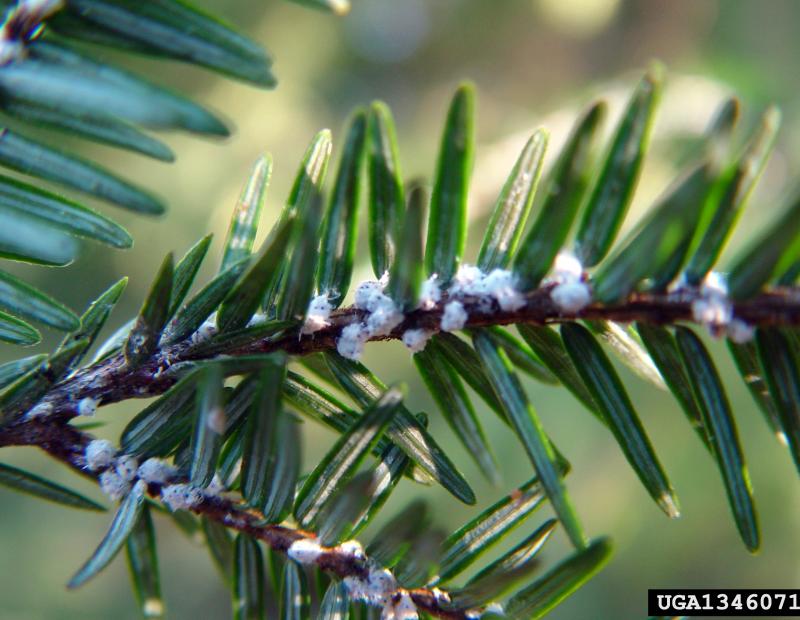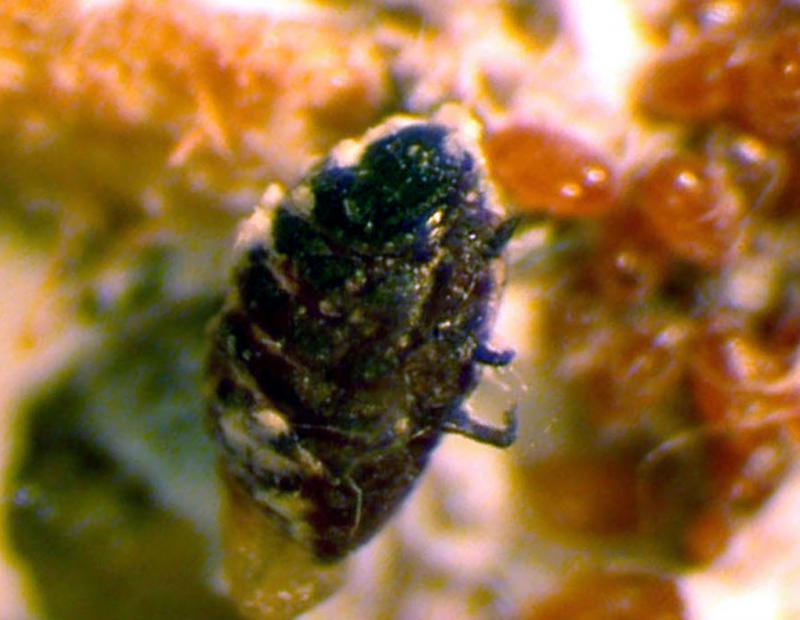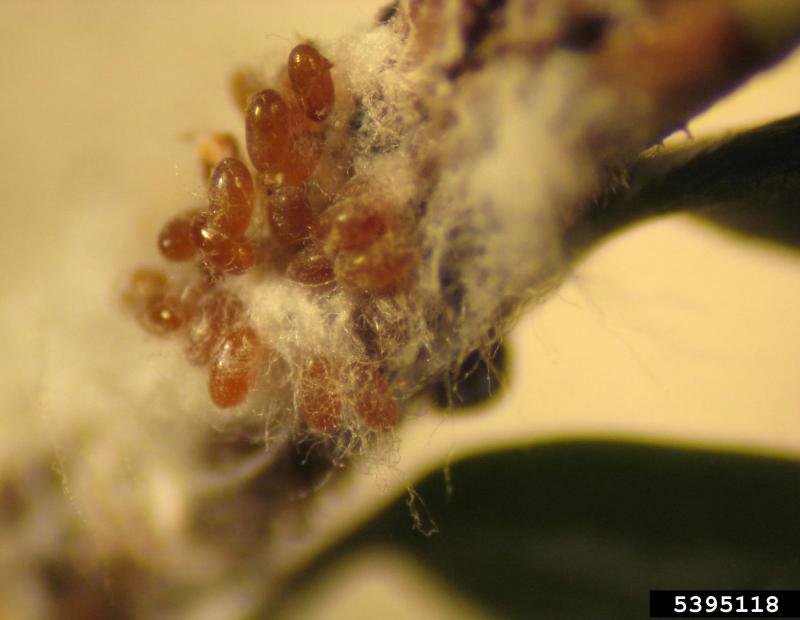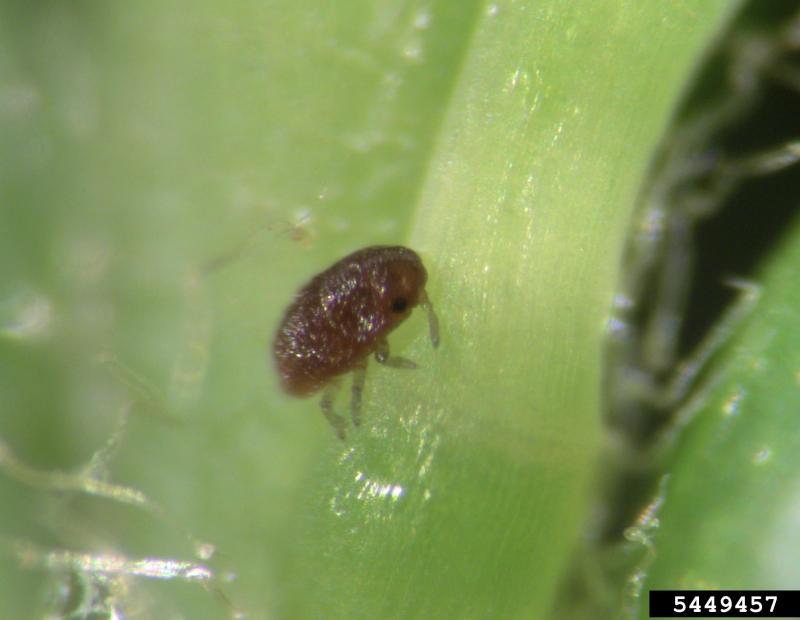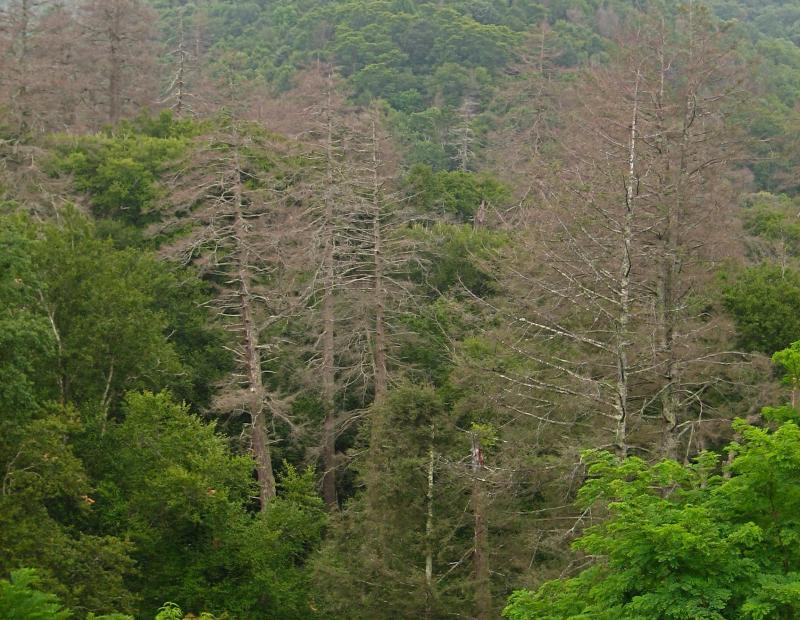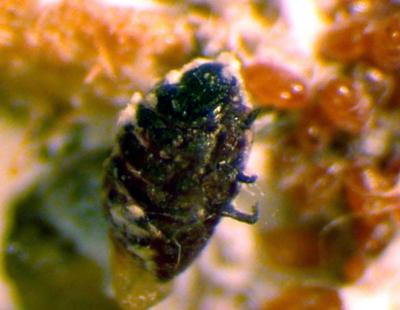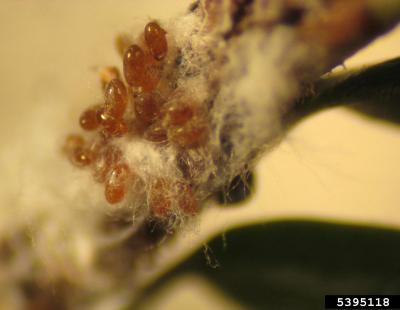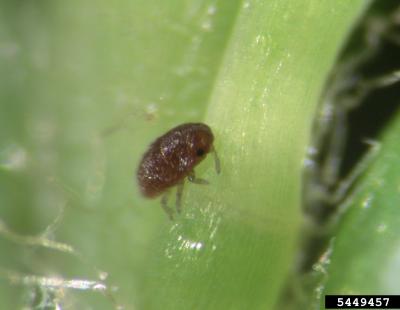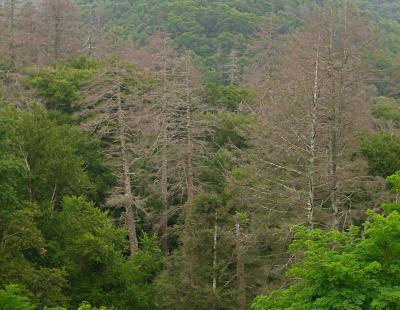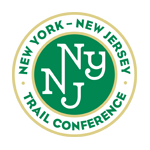- Forest Pests
- Terrestrial Invertebrate
Hemlock woolly adelgids are damaging hemlock ecosystems in eastern North America where both eastern hemlock and Carolina hemlock serve as the hosts. At this time, about 25% of the 1.3 million hectacres have been infested. It has been figured that the entire range of the eastern hemlock is at risk within the next 20 to 30 years.
Immature nympths as well as adults, damage the trees by sucking sap from the twigs. Resulting, the trees lose vigour and prematurely drop their needles, to the point of defoliation, which may lead to death. Once occupying a tree, they can kill the host tree in three to four years if left uncontrolled. Trees of all sizes and ages are attacked, but natural stands aree at the greatest risk. Reduced sales of hemlocks for ornamental use, impacts industries. Hemlocks provide nesting sites and foraging habitat for neotropical migratory birds. There are several threatened and endangered species that requires the hemlock to survive, and face a greater threat with these tree populations being impacted. Large-scale hemlock die-offs will affect species diversity, vegetation structure, stand environmental conditions and ecosystem processes.
Adelges tsugae is a small, reddish-purplem aphid-like insect that covers itself with a white, waxy secretion. They can be either winged or wingless. Their mouthparts are thread-like and about 1.5mm long that are used to suck sap. Eggs of these insects are brownish-orange but darken as the embryo matures. When the eggs hatch, reddish-brown crawlers can only be seen with a hand lens, as they are barely visable with the naked eye. These crawlers move about in search of a suitable location to settle, where they insert their mouthparts into the plant at the base of the hemlock needles, and will remain in the same place for the rest of their lives.
Dormant first instar nymphs are black with a white fringe around the edge and down the centre of the back. Developing nympth produce white, cottony, waxy tufts that cover their bodies. These white masses are 3mm or more in diameter. Spruce is the primary host where the sexual cycle occurs, with the secondary host being the hemlock.

